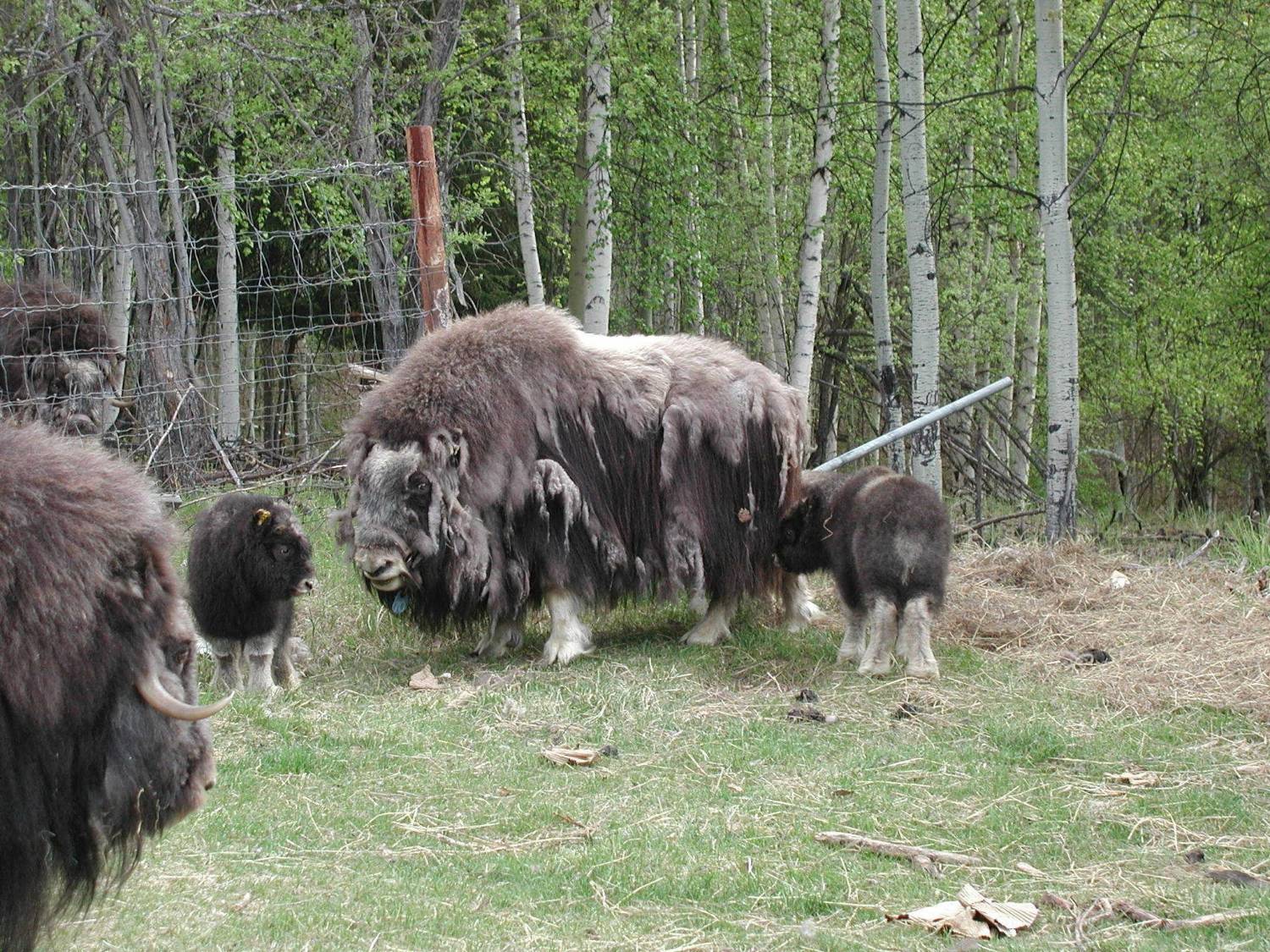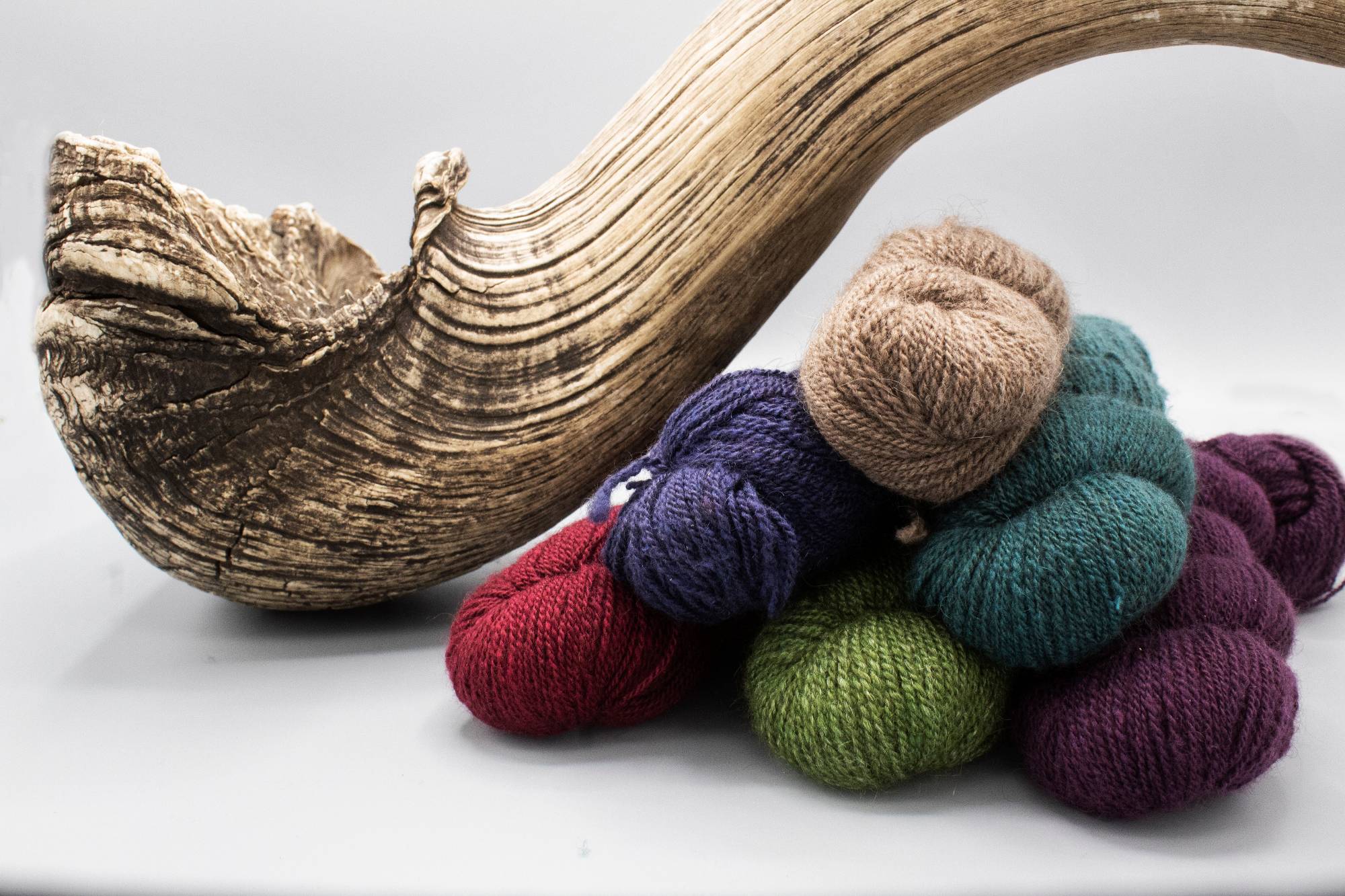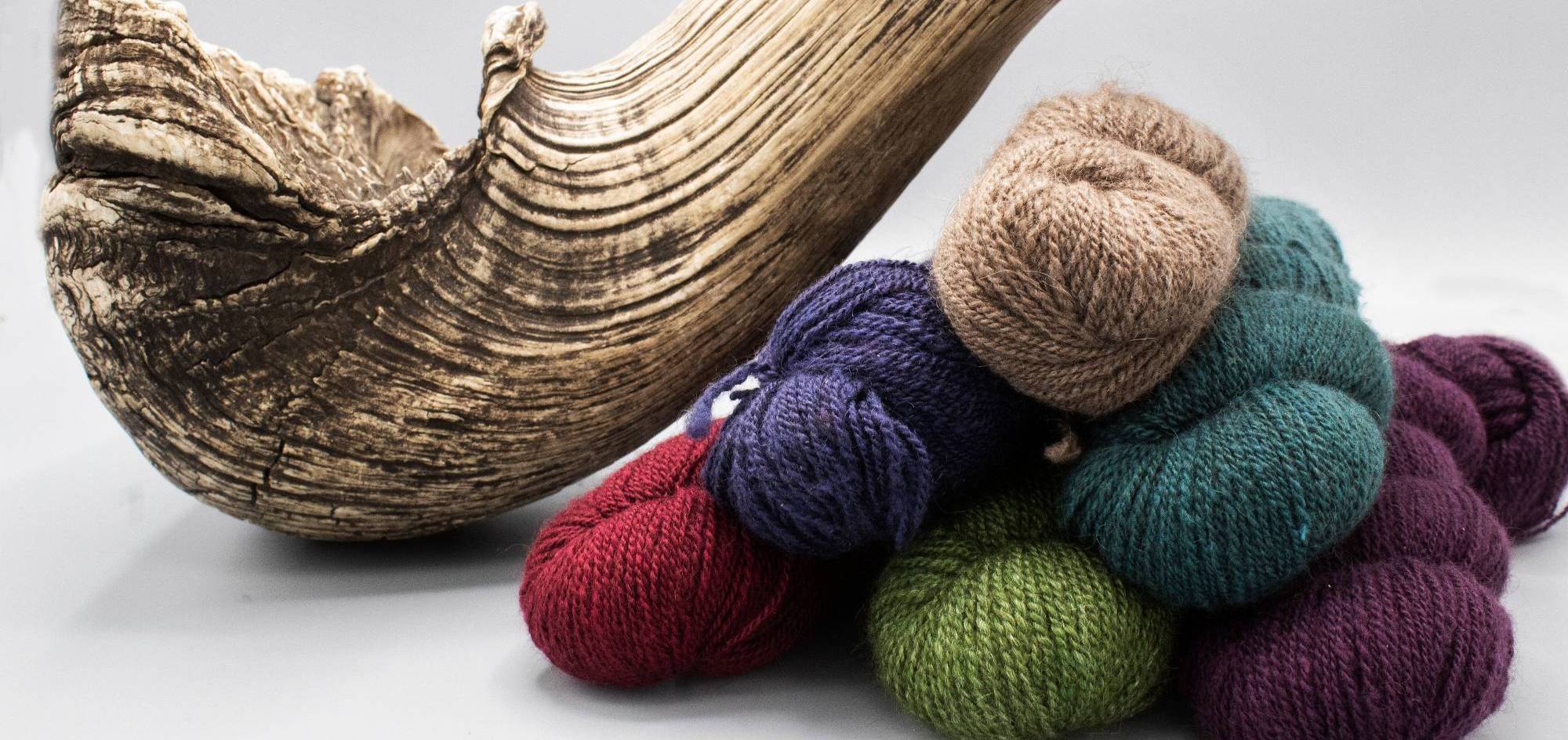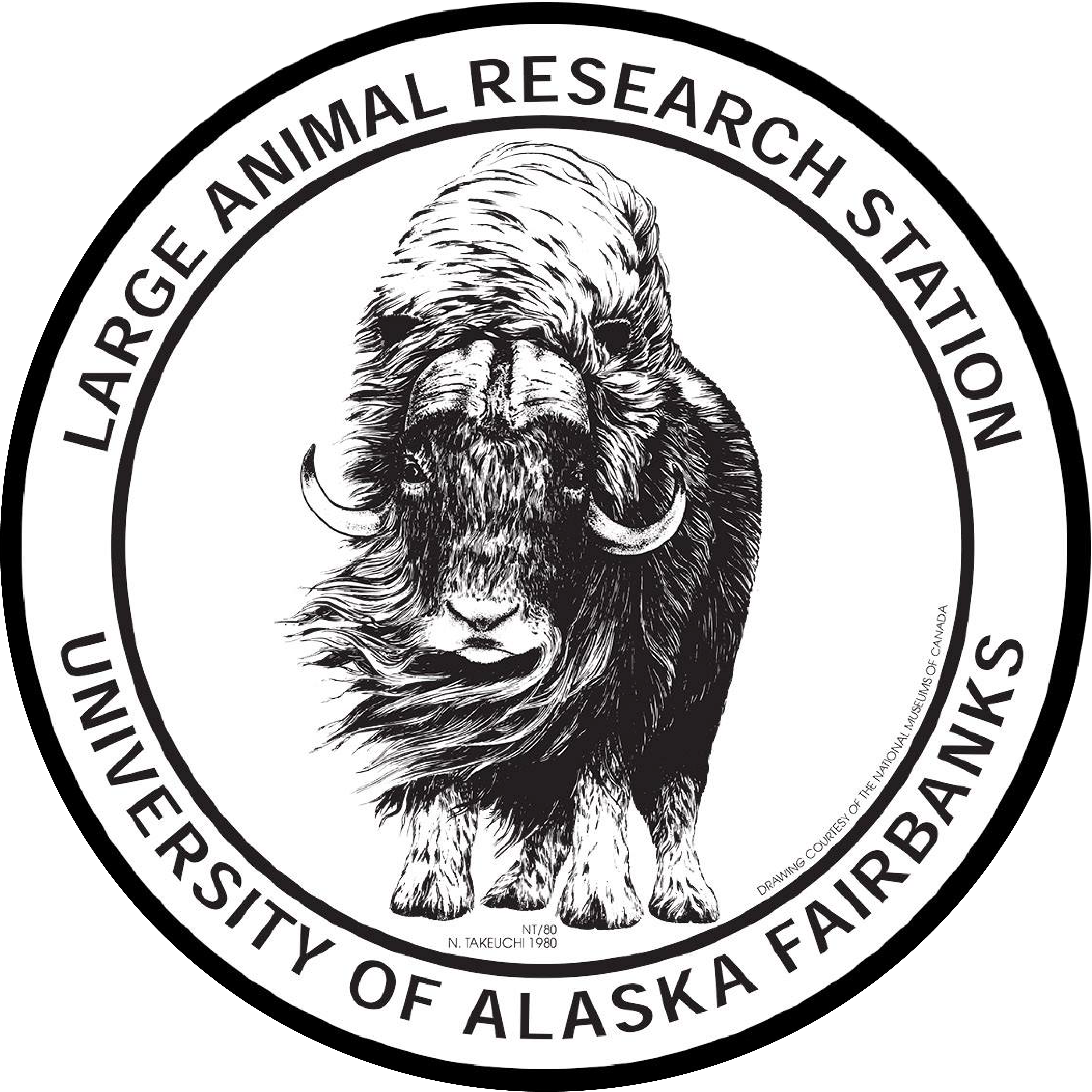What is Qiviut?
Qiviut (pronounced kiv'-ee-at) refers to the soft, downy underwool produced by muskoxen. The insulating warmth of qiviut is one of the principal reasons muskoxen can survive arctic winters. These relics of the last ice age neither migrate nor hibernate to escape the winter. Instead, they live on the open tundra, exposed to the harsh, cold extremes of the polar night. Their pelage is uniquely adapted to arctic winters: an outer coat of long, coarse guard hair protects the underwool from the wind and snow. Snow can rest on the back of a muskox without melting. The guard hair keeps the warmth, trapped in the qiviut, near the body. Muskoxen shed their underwool every spring and grow a new insulating layer during the short arctic summer and fall.

Qiviut is shed in a highly synchronous manner – it lifts from the animal over a very brief period (approximately 2 weeks). Like a thick blanket, the qiviut works its way out through the guard hair. In the wild, the shed qiviut hangs in ragged tatters from the animals. They will rub the qiviut off on the ground or any convenient rubbing post or let the wind shred and scatter it. Enterprising northerners follow muskox herds when they are shedding and collect the qiviut from the tundra. Care needs to be taken though, as qiviut quickly weathers and becomes brittle when exposed to the elements. On the farm, the shaggy appearance means its time to comb.




